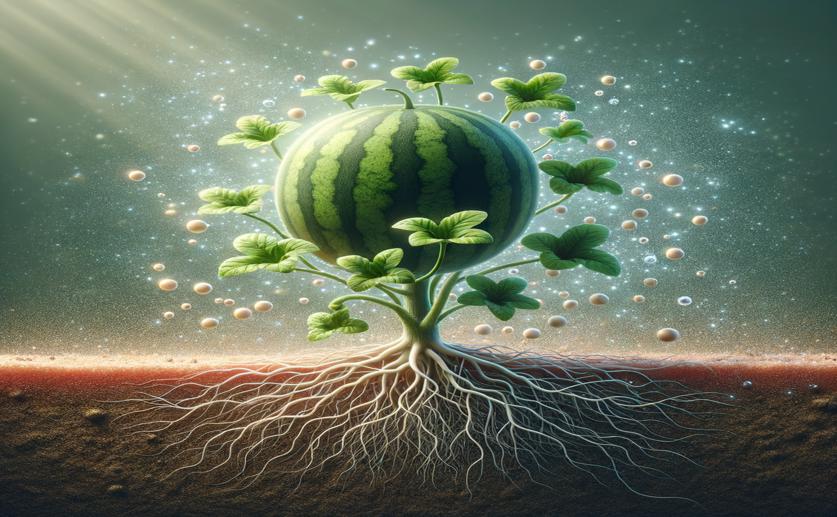
How Watermelon Plants and Helpful Bacteria Handle Toxic Cadmium
Jim Crocker
4th August, 2024

Image Source: Natural Science News, 2024
Key Findings
- Researchers at the Anhui Academy of Agricultural Sciences studied how phosphate-solubilizing bacteria (PSB) and grafted watermelon plants can reduce cadmium (Cd) toxicity in soil
- The bacteria Burkholderia sp. 'N3' and grafted watermelon plants showed significant changes in gene expression to cope with Cd stress
- The study suggests that using PSB and grafting techniques can help reduce Cd accumulation in crops, enhancing food safety and agricultural sustainability
References
Main Study
1) Transcriptome sequencing analysis of gene expression in phosphate-solubilizing bacterium 'N3' and grafted watermelon plants coping with toxicity induced by cadmium.
Published 3rd August, 2024
https://doi.org/10.1007/s11356-024-34601-2
Related Studies
2) Harnessing microbial multitrophic interactions for rhizosphere microbiome engineering.
3) Melatonin Alleviates Copper Toxicity via Improving Copper Sequestration and ROS Scavenging in Cucumber.
4) Vegetables contamination by heavy metals and associated health risk to the population in Koka area of central Ethiopia.



 3rd August, 2024 | Jenn Hoskins
3rd August, 2024 | Jenn Hoskins